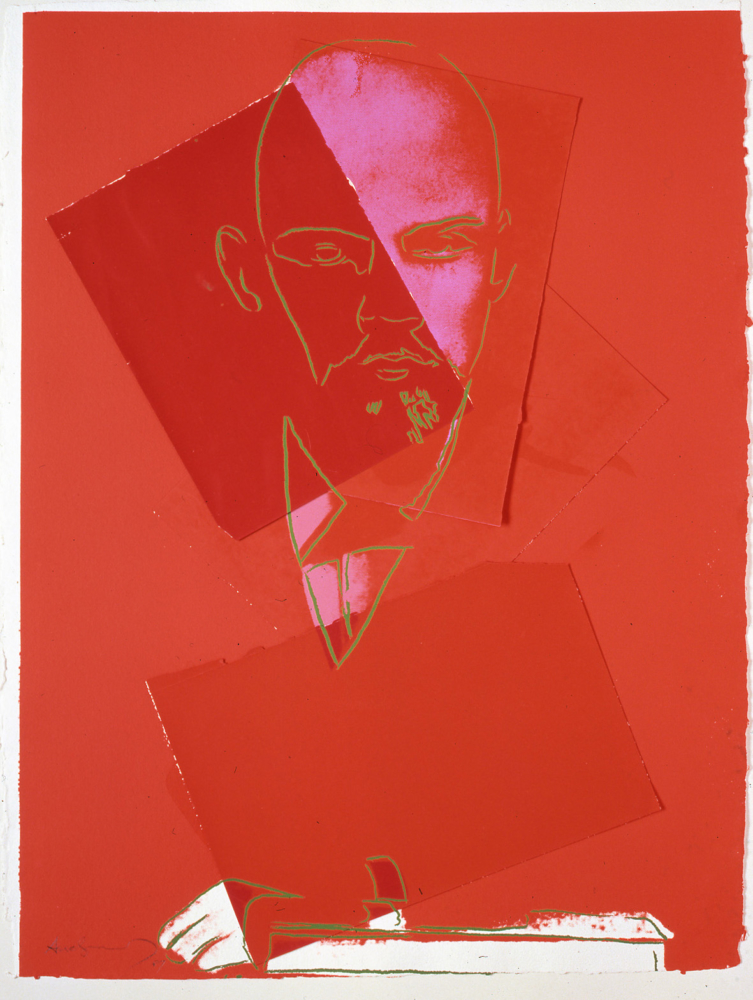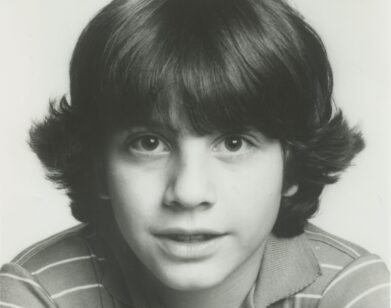Andy Warhol and Vladimir Lenin Walk Into an Art Gallery

Andy Warhol in front of the Lenin works at his Factory, February 1987. Copyright Galerie Klüser.
What do you get when you take a firebrand, Russian revolutionary and an idiosyncratic, American pop artist, and throw them together into an art gallery? Andy Warhol’s Lenin, a new exhibition at Phillip’s Berkeley Square, attempts to answer that question. The show, which is on from Sept. 26 through Oct. 4 at the London gallery, features a series of nine paintings created by Andy Warhol based on a photograph of Vladimir Lenin, that was shown to the artist by the publisher and gallerist Bernd Klüser in 1987. Though they never met, (Warhol was born four years after Lenin died), Anne Schneider-Wilson, Phillip’s Senior Editions Specialist, believes that what might seem like an odd pairing at first belies a more complex relationship between the two figures, one that explores the dynamics between portraiture and politics. Below, Interview chatted with Schneider-Wilson about her favorite parts of the exhibition, and speculated what Andy might have said to Vlad (and vice versa) if they ever got the chance to say privyet.
———
MARK BURGER: What do you think it’s going to be like to stand in a room with all of these images of Vladimir Lenin staring back at you?
ANNE SCHNEIDER-WILSON: I think it will be quite a surreal experience, whether one knows about Lenin as a political figure or not. I think Warhol was not interested in Lenin as a historical personality, but felt that there was some sort of aura surrounding this photograph. Also, I think Warhol recognized that this sort of photograph had an appeal to a wider audience.
BURGER: It’s a very striking image. In Warhol’s larger breadth of work, I feel it stands out.
SCHNEIDER-WILSON: I think he was more interested in the image than in the person. I think what he was also interested in, as a portrait artist, was in the public image, which was reflected by the media. That’s a really interesting aspect and actually quite relevant to today. Obviously, Lenin is all about communism, and not about capitalism or consumerism. But it’s also about power and leadership and, with that book at the bottom of the painting, there is the intellectual aspect of it. I think in that way it fits in perfectly with all the other portraits he’s done.
BURGER: Who do you think Warhol would want to do a portrait of today?
SCHNEIDER-WILSON: I think that’s a very good question. I guess it would be someone who has a big presence in the press. Maybe Trump, maybe the Kardashians. I don’t know. I think especially someone like the Kardashians, who we don’t know what they’re really like, but we know what their presence in the press is like.
BURGER: What do you think Lenin would have said about the images if he were around when they made, or even today?
SCHNEIDER-WILSON: I don’t know if he would like to see all these images of him. I found this quote in this book the gallery produced, where Lenin said, “Everywhere I look I see people writing about me, I find this completely un-Marxist and un-Marxist concentration on a single individual. Very harmful. It’s wrong and undesirable and unnecessary.”
BURGER: What do you think it would be like to be in the same room as Warhol and Lenin?
SCHNEIDER-WILSON: I would love to be at that dinner party, absolutely. I don’t think there would be a huge conversation. I think Warhol didn’t necessarily want to know too much about people’s personalities. I think he wanted to keep his distance and not touch them, and not be too involved. I would have thought he probably would stay well clear of Lenin.

Andy Warhol, Lenin, 1986. Acrylic and silkscreen on canvas.
BURGER: Which one of the images do you gravitate towards?
SCHNEIDER-WILSON: It’s difficult. I do like the collages very much because they have a lot of texture, and they are quite interesting because in all of them, the face is covered. I do find them interesting also because I think it’s quite unusual to have such a large series of collages by Warhol together.
BURGER: What are you most excited for people to see with this exhibition?
SCHNEIDER-WILSON: The whole exhibition was put together in 1987 and I’m not entirely sure if they showed all the first 40 works which were commissioned, but it’s almost a bit like a time warp to try and recreate something where we have one artist, one sitter, in one exhibition. I think that’s quite unusual in an exhibition context.






